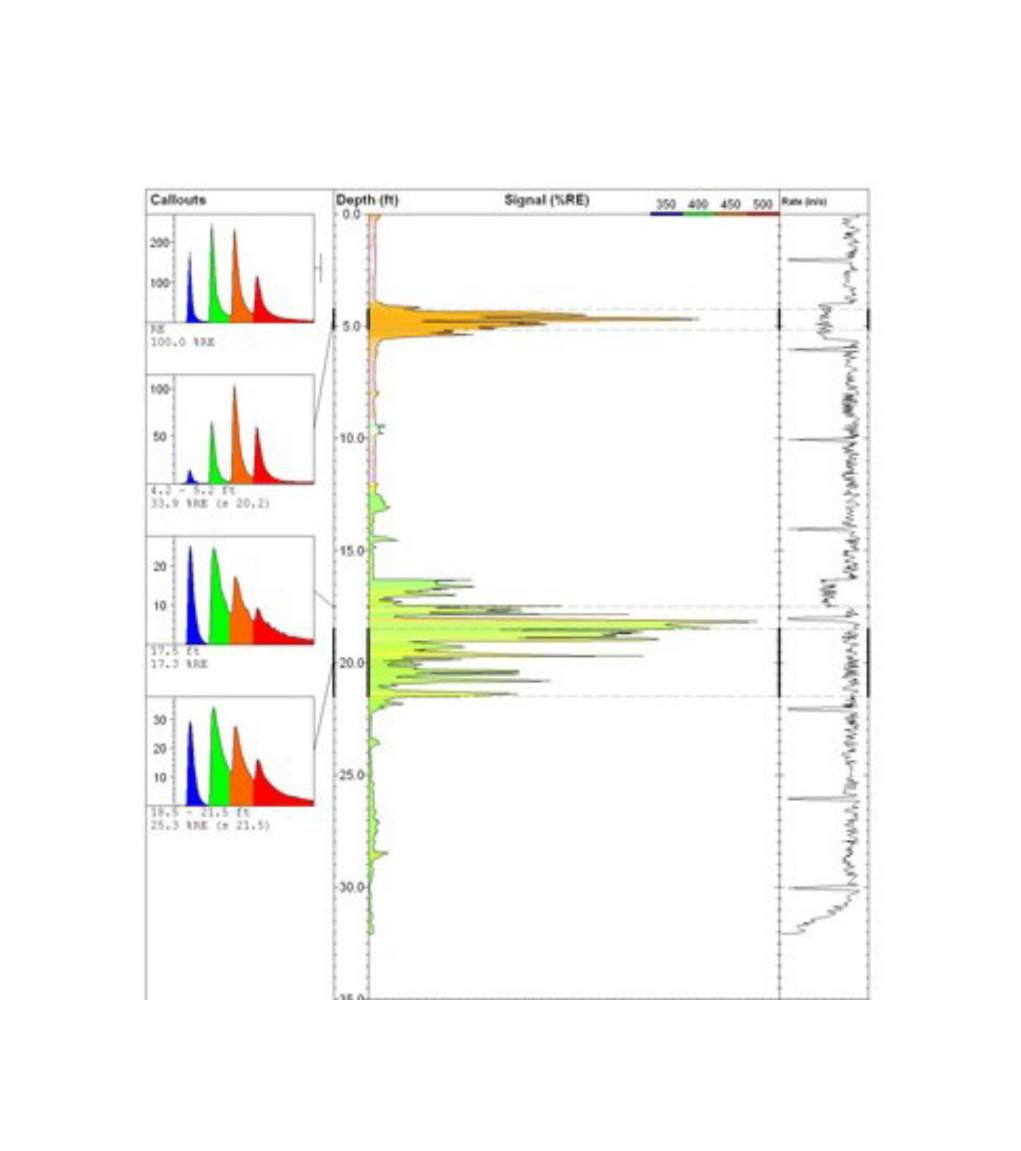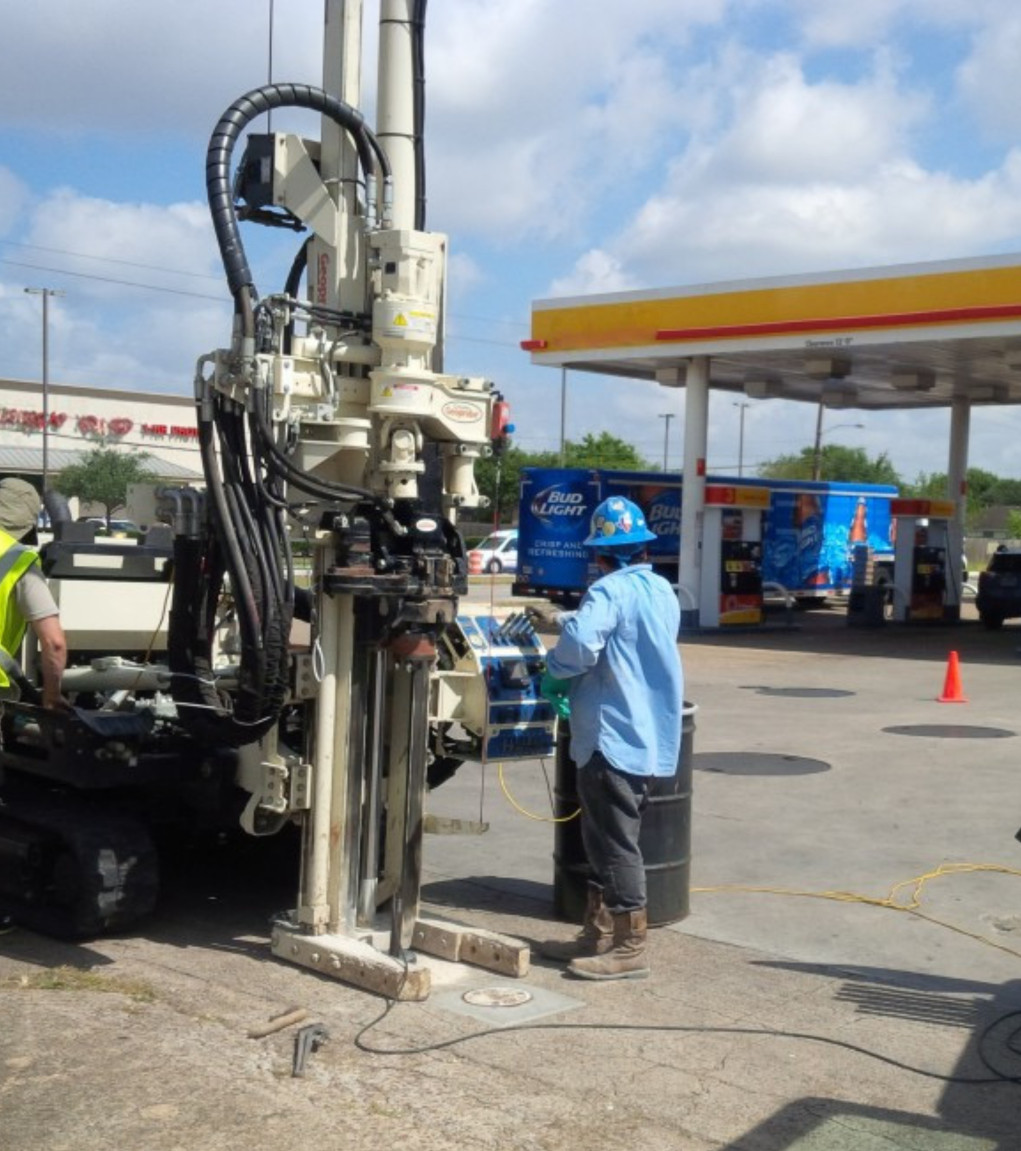Laser Induced Fluorescence (LIF)
Laser Induced Fluorescence (LIF), delivered via an Ultraviolet Optical Screening Tool (UVOST®) allows for the subsurface delineation of light non-aqueous phase liquids (LNAPLs).
The UVOST® distinguishes molecules found in LNAPLs, like petroleum-based fuels and oils (i.e. gasoline, kerosene, fuel oil, etc.) by assessing fluorescence intensity, wave spectrum, and time decay of these polycyclic aromatic hydrocarbons (PAH’s) fluorescence return signals.
Effective media
Soil
Targeted contaminants
Hydrocarbons

Polycyclic Aromatic Hydrocarbons (PAH)
LIF response varies according to PAH concentration and composition. These properties, including the fluorescent nature of the compounds allow the UVOST® to provide both qualitative and semi-quantitative data.
Using direct push drill rigs (i.e. Geoprobe) the UVOST’s rugged design and tooling has the capacity of reading and logging 100 – 150+ m per day, making it an effective tool for identifying and delineating petroleum NAPL.
High-resolution data (1 – 2 cm resolution with a 2 cm/sec push rate) is available in real-time on logs plotting fluorescence response vs depth, allowing for immediate site-specific decision-making, while in the field.
MiPHT
The MiHPT system is a combined unit that includes the Membrane Interface Probe (MIP) and Hydraulic Profiling Tool (HPT). These technologies can delineate petroleum and chlorinated volatile contaminants, as well as record hydrogeological conditions in-situ. Contaminant and hydrostratigraphic data can then be modeled to create a better understaning of subsurface dynamics.
Membrane Interface Probe:
The MIP is a rapid screening tool designed to log the relative concentrations of volatile organic compounds (VOCs) vertically in the subsurface. The probe is directly pushed, or percussion hammered into the subsurface. Downhole, a heater block, and a semi-permeable membrane are used in conjunction with an inert carrier gas to transport the contaminants encountered to the above-ground sensing equipment. The MIP uses a photoionization detector (PID), a flame ionization detector (FID), and a halogen-specific detector (XSD) to differentiate those compounds and measure their relative concentrations. This screening provides a robust spatial understanding of the distribution of dissolved, vapour, and sorbed phase volatile contaminants.
Effective media
Soil & Groundwater
Targeted contaminants
Volatile Organic Compounds (VOCs) & petroleum products

Hydraulic Profile Tool (HPT)
The hydraulic profiling tool is a powerful technology designed to assess hydrostratigraphic conditions of the subsurface. As the probe is advanced via direct push or percussion hammer, water is injected at a known pressure into the subsurface. This injection pressure correlates with the permeability of the subsurface strata enabling mapping of different structures and contaminant pathways. The probe can also be utilized to measure hydrostatic pressure to estimate the water table surface hydraulic conductivity in the saturated zone.
This technology provides critical information for identifying potential zones of mass flux and contaminant transport in high resolution.
